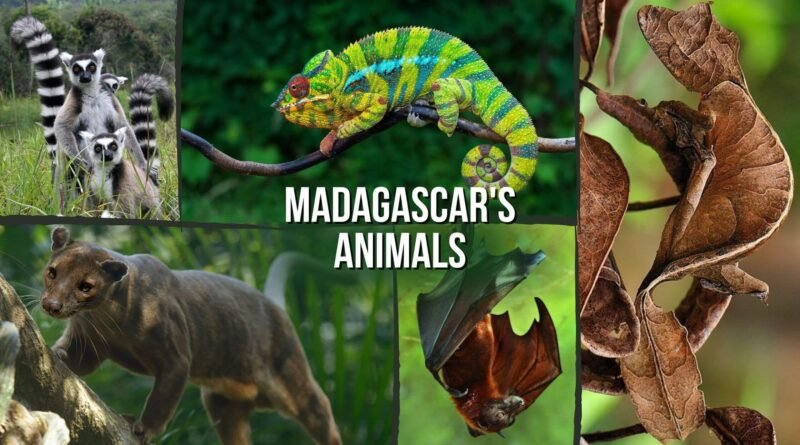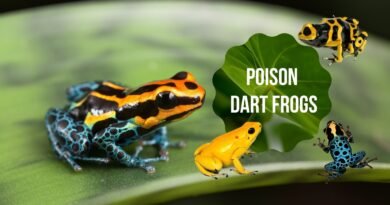Meet Madagascar’s exotic animals
Madagascar is the fourth largest island in the world, located off the eastern coast of Africa. It is home to a unique biodiversity on the planet. Humid tropical forests, dusty deserts, mountains, and savannas are part of its more than 226,600 mi² of area. With this variety of habitats, it’s no wonder that the island is home to a large number of exotic and unique animal species. Most of them are endemic, that is, they are not seen living naturally anywhere else in the world. The animals on the island are fascinating and offer experts a unique opportunity to study evolution, species conservation, and ecology as a whole. In this article, we’ll learn more about five of the most incredible Madagascar’s animals, their features and behaviors, in addition to the threats they face in their habitat. So, let’s meet them! Enjoy reading and have fun!
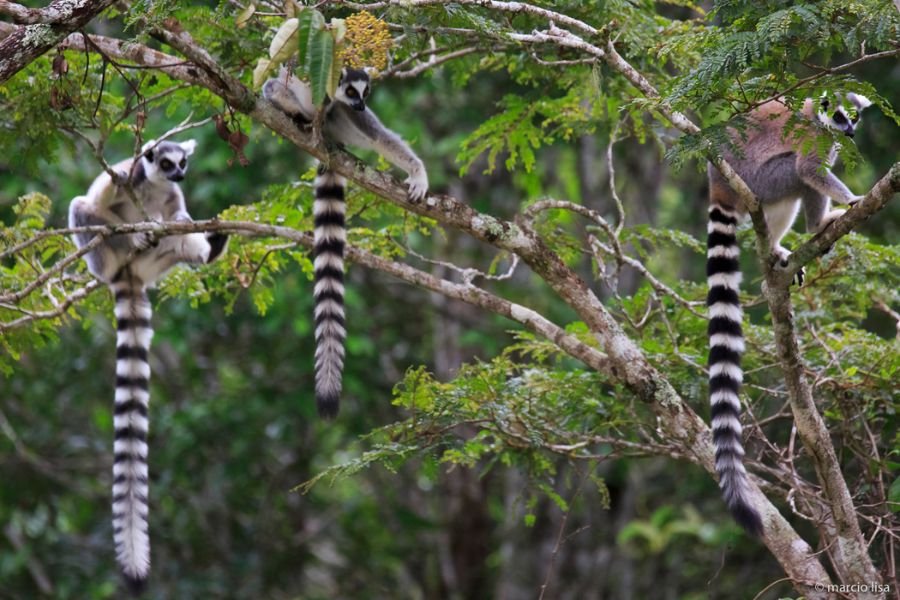
Ring-tailed lemur (Lemur catta)
If you’ve watched the animated movie Madagascar, you’ll remember King Julien, one of the funniest characters in the movie. But why are we talking about him? Because the character King Julien was a lemur!
Lemurs are a group of primates endemic to Madagascar, that is, they can only be found living in the wild in this place. They belong to the Lemuridae family and are known for their unique appearance: their large round eyes, a long nose, and a long bushy tail. The numbers vary, but it is estimated that there are more than 100 species of lemurs on the island. At least 3 species have already become extinct due to anthropic actions, that is, human activities such as natural resources exploitation, poaching, pollution, etc.
Due to the large number of these primates, their eating habits and sizes vary. They can be herbivores, frugivores or insectivores. They are known to be social animals, living in family groups ranging from 2 to over 30 individuals. Unfortunately, many species of lemurs are endangered due to habitat destruction and poaching.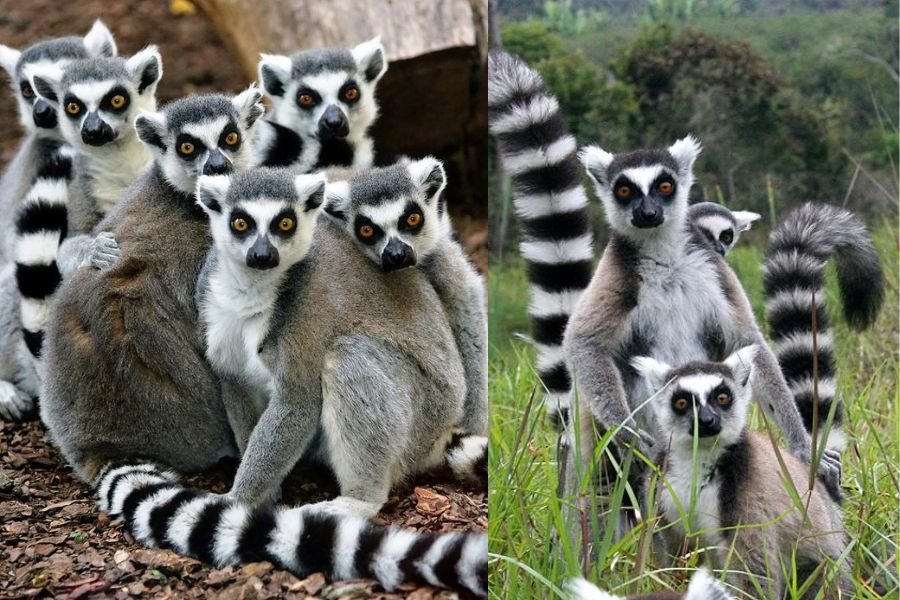
The ring-tailed lemur (Lemur catta) can be easily recognized due to its long bushy tail full of black and white rings. Its little face is whitish, with big curious eyes and a black nose. On the rest of the body, the coat is gray. It is a very agitated animal, enjoying jumping from one branch to another. They live in social groups of 20 to 30 individuals and the group is always led by a female. Its diet is based on fruits, flowers, and leaves, but it can also eat some insects and small vertebrates.
Unfortunately, the ring-tailed lemur is one of many of Madagascar’s animals that are classified as endangered due to habitat loss caused by agriculture, deforestation, and poaching.
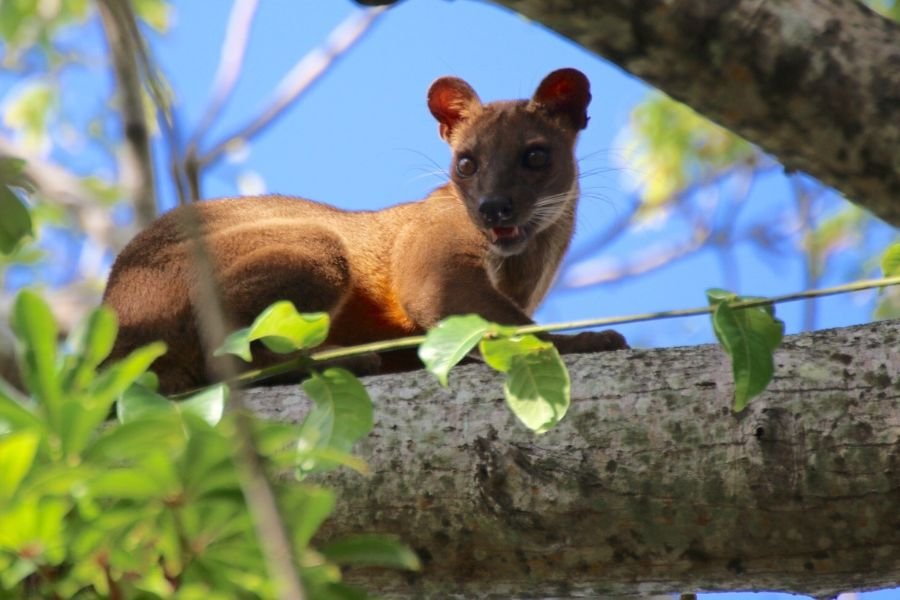
Fosa
Another of the many unique and uncommon species on the island, which have evolved in isolation from other species in other parts of the world, are fosas. The fosa (Cryptoprocta ferox), is a carnivorous animal and the largest terrestrial predator in Madagascar. Measuring almost 5 feet long, including the tail, and an average weight of 17 to 20 pounds, it has a short, reddish-brown coat, and its tail is long and bushy. Fosas are agile Madagascar’s animals and can easily climb trees. Additionally, they are excellent swimmers.
They are considered solitary and territorial animals and have mainly nocturnal habits when they go out to hunt. Their prey include a wide variety of animals, such as other mammals, reptiles, birds, and lemurs. Skilled hunters, they chase their prey with great speed and agility and can even capture primates in the treetops.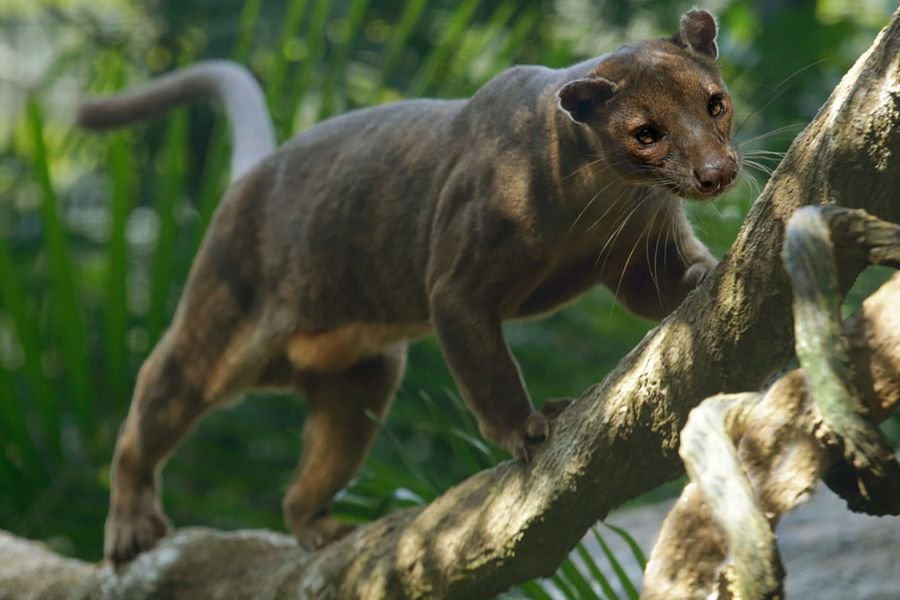
They are at the top of the food chain and play a crucial role in balancing the animal ecosystem on the island: the fosas are responsible for controlling the population of other species. Unfortunately, according to The International Union for Conservation of Nature (IUCN), this carnivorous predator’s condition is vulnerable. With just over 2500 individuals spread across the island, poaching is their greatest danger, as they are heavily chased for their meat and skin. Its habitat reduction due to deforestation for agriculture and logging also contributes to its vulnerability to the extinction of its species.
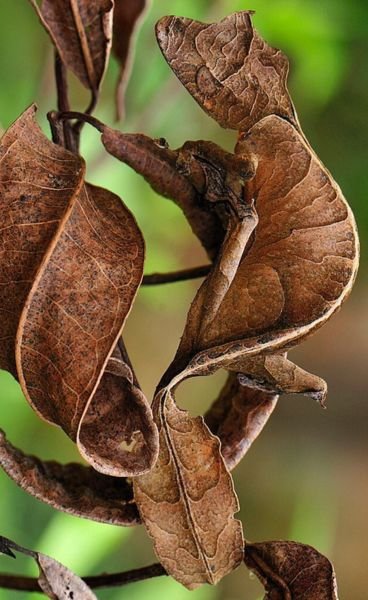
Satanic/Fantastic leaf-tailed gecko (Uroplatus phantasticus)
This unique gecko is another species of animal from Madagascar, found in the wild only there, that is, they are endemic to the island. It is known for its unique appearance and incredible camouflage capacity. This skill is thanks to its textured skin and its color that perfectly mimics the natural environment in which it lives, looking like a dry leaf or a tree branch. The satanic leaf-tailed geckos are about 3 inches long and are nocturnal, feeding mainly on insects.
The lifespan of the fantastic leaf-tailed gecko in its natural habitat is unknown, but in captivity, depending on the care it receives, it can reach about 10 years. Unfortunately, this remarkable little one is endangered due to its habitat loss and mainly due to poaching. It is one of the most targeted gecko species for the exotic pet trade.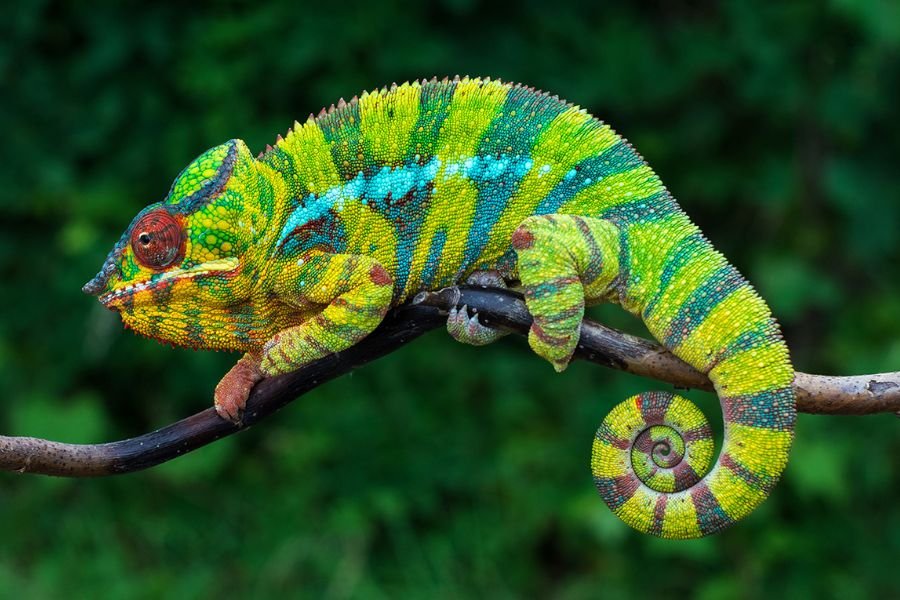
Panther chameleon (Furcifer pardalis)
The panther chameleon is found throughout the island and its color patterns vary according to its geographic location. Endemic to the island, they can measure up to 23 inches long, the females are slightly smaller, the size of a smal lizzard.
With one of the most impressive camouflage techniques that exists, the panther chameleon skin is covered by cells called chromatophores, which are capable of changing color. These cells contain pigments of different colors, such as yellow, green, red, and brown. When the cells expand or contract, the pigments change their position, creating intricate patterns that blend in with the surrounding environment. In addition to changing color, the panther chameleon can also change the texture of its skin, using bony projections, called tubercles, that extend from its skin. These tubercles are composed of special bones and muscles that it controls to create bumps and bulges, creating shadow effects by hiding behind some leaf or branch. The panther chameleon also uses these bony projections to simulate the texture of different surfaces, such as tree barks or leaves. This helps it to become nearly invisible to potential predators or prey.
Unlike its other colleagues mentioned above, fortunately, the panther chameleon is not endangered. It is classified as “Least Concern” by The International Union for Conservation of Nature (IUCN).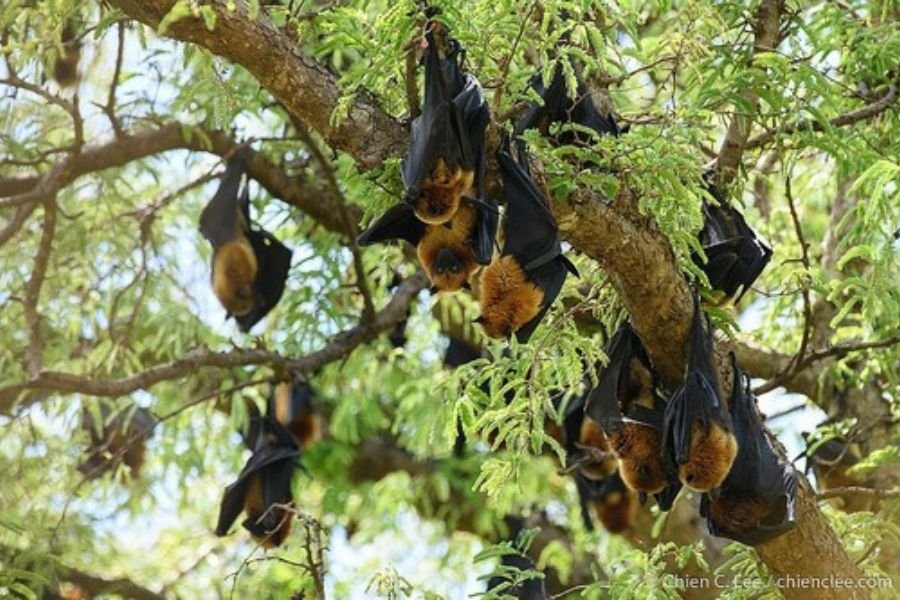
Madagascan flying fox (Pteropus rufus)
The Madagascan flying fox (Pteropus rufus) is one of the largest bats in the world and is endemic to the island. It has a wingspan that can reach an incredible 60 inches long and a weight of up to 1.65 pounds. The “rufus” part of its name is due to its orange-red coat.
They are frugivorous animals, that is, they feed mainly on fruits. For this reason, they are known to be an important species of forest pollinators, as they spread the seeds of the fruits they eat. Thus, they are very important for the island’s biodiversity.
Its habitat is in the moist forests of the island and also on nearby islands such as the Comoros Islands. With nocturnal habits, during the day, they rest hanging from the branches of large trees, always in remote places, in huge colonies of up to 1000 individuals.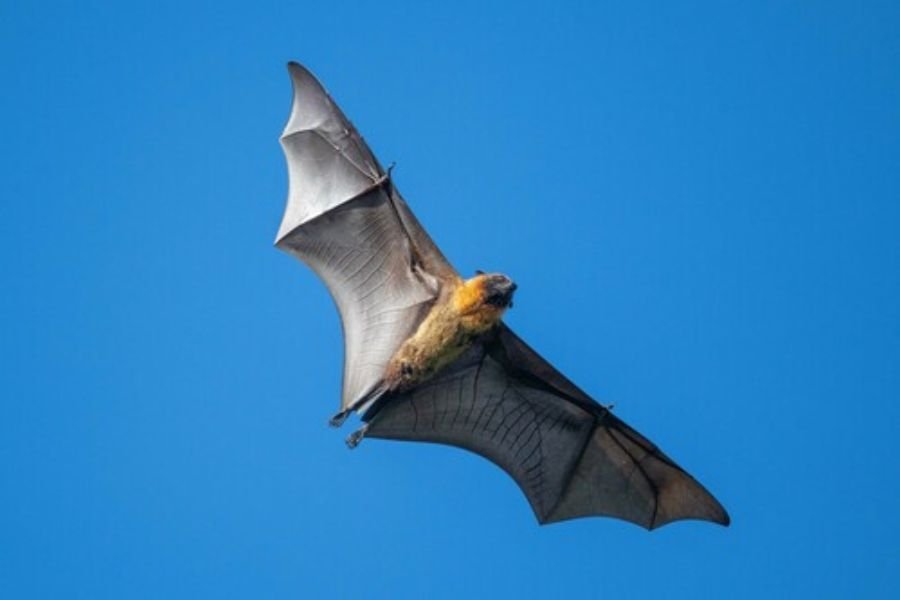
Unfortunately, this is another of Madagascar’s animals that are endangered and classified as vulnerable by The International Union for Conservation of Nature (IUCN). A few reasons for this are the loss of their habitats due to agriculture and logging and also due to hunting. The Madagascan flying fox is hunted by locals for human consumption for its meat and its skin, used to make drums. They are still considered agricultural pests by the local community due to the havoc they wreak on fruit crops and other food crops.
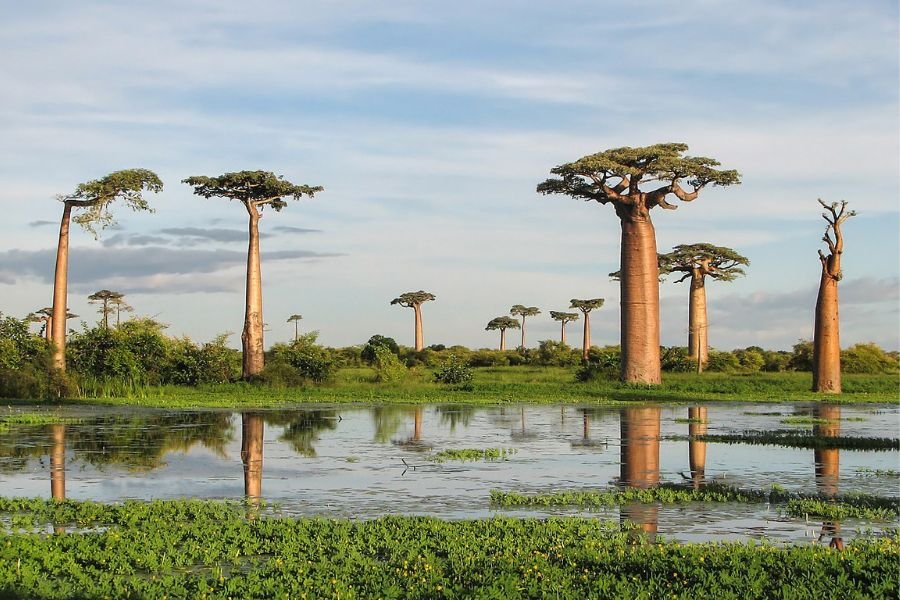
Madagascar and the importance of its biodiversity to the world
Madagascar is one of the most biodiverse areas in the world and is of great importance for global wildlife conservation. The island has a unique geological history, separated from the African continent about 160 million years ago, which led to the development of extraordinary fauna and flora. More than 90% of Madagascar’s animals and plants are endemic, meaning they are found nowhere else in the world! Some of them have evolved uniquely within the island and wouldn’t exist or thrive elsewhere.
Today, all this wonder of nature that represents Madagascar and its biodiversity is threatened by anthropic actions, that is, of human nature. Forest degradation due to agriculture, logging, and mining together with illegal and predatory fishing and hunting are endangering millions of years of natural development of this rich environment. Another factor that threatens the region’s biodiversity is invasive species. Animals without natural predators on the island that are introduced by humans in the area.
Biodiversity hotspot
Have you heard about biodiversity hotspots? The term hotspot refers to areas whose biodiversity is extremely rich and at the same time threatened. This term was coined by one of the most important environmental scientists in the world, the British Norman Myers. This term arose due to a recurring problem for ecologists: how to define which areas of the planet are most urgent for conservation actions? To resolve the issue, in 1988, Myers elaborated the concept of biodiversity hotspots: areas with at least 1500 endemic species (which only live there) and which have already lost ¾ of their original natural vegetation.
Today, there are 36 biodiversity hotspots worldwide, and Madagascar is one of them. The island’s biodiversity, including its rich variety of Madagascar’s animals, as well as its original vegetation, provides valuable resources for studies in the fields of medicine and agriculture
Conservation actions
Currently, there are some biodiversity protection actions being carried out on the Island, both by the government and by non-governmental organizations (NGOs) and local communities. Some of the most endangered species of Madagascar’s animals, such as the ring-tailed lemur, are receiving special protection from organizations such as the Wildlife Conservation Society and the Madagascar Fauna and Flora Group. These organizations work on captive breeding programs, habitat protection, and environmental education.
The government has also been committed to creating protected areas. Currently, there are 43 of these areas spread across the island. 22 of them are classified as national parks, such as Ranomafana National Park, Andasibe-Mantadia National Park, Isalo National Park, and Masoala National Park.
There is still much to be done, but these actions are already a promising start to ensure the protection of this island’s phenomenal biodiversity.

